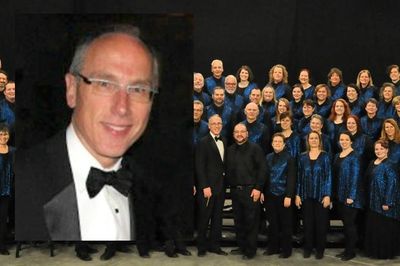Two moments stand out in my mind – two very different experiences.
Our first concerts were held in church sanctuaries. We were so very grateful to the welcoming faith communities in Nashville who generously offered their facilities. When we needed a larger space, we found a generous reception at Ingram Hall at the Blair School of Music, and had several wonderful concerts there. But as we continued to grow we took a huge step and booked the Polk Theater at TPAC.
On the very day that we were scheduled to open for the first time at TPAC, I received an email from someone at the Nashville Symphony asking if we would consider singing background vocals for an orchestral show of all Broadway music.
I saved the announcement until the chorus was lined up backstage getting ready to sing for the first time at TPAC. As you can imagine, the group was already emotionally charged, but there were actually gasps of surprise and joy when I announced that we would be singing with the Nashville Symphony. Who would have dreamed?!
We were a small group of people, back when I started directing Nashville in Harmony in August of 2005, but we had a very big dream – we were out to change our community by singing. At that time I’m not even sure it was about equal rights or legislation or marriage equality. We just wanted to be accepted for who we were. We wanted the straight majority to see gay and lesbian people as people. Our strategy was simply to sing together – gay and straight, black and white, young and old – to model the kind of inclusive community we dreamed about, and to raise our voices shoulder-to-shoulder singing songs of justice, peace, and acceptance.
We knew, however, that to be heard, especially in this town, we needed to be as good as possible. We didn’t want to be a gay chorus; we wanted to be a great chorus. So we worked hard, practiced a lot, challenged ourselves, and took our mission seriously. And it worked. I think most of us who started with the group were genuinely surprised at how fast the group grew, and at the recognition and opportunities we began to enjoy.
The second moment I want to recall took place a couple hundred miles due south. A few years ago, as part of our work to learn about the similarities between the Civil Rights Movements and our work for equal rights for LBGT persons, we made a concert tour to Birmingham, Alabama. We planned to tour the Civil Rights Museum and to sing in Kelly Ingram Park, and we hoped to be able to take a group photo on the steps of the 16th Street Baptist Church, the site of the 1963 bombing that killed four young girls. We called our tour The Equality Ride, a term we borrowed and adapted from the 60’s era “Freedom Rides” through the South.
In stark contrast to the inhospitable reception of the Freedom Riders, our LGBT and straight caravan was welcomed by a member of the Chamber of Commerce – a surprise in itself. But a greater surprise was coming. The city representative asked what our plans were, and we explained the rationale for our trip, and detailed our itinerary, including our hope to take a group photograph on the church steps. Then she surprised us by asking, “Would you like see inside the church?”
Some recall the emotional chills. Others remember the tears. No one standing there was unaware of how significant that moment was for all of us. There was no audience except the single representative from the Chamber of Commerce, but it was one of our most important performances ever.
I was humbled and I was proud.
Don Schlosser is the Artistic Director at Nashville in Harmony. The world premiere of the documentary "Nashville in Harmony: Ten Years of Using Music to Build Community" will be April 18 at the Nashville Film Festival. Tickets are available now. Nashville in Harmony is on Facebook and Twitter.
